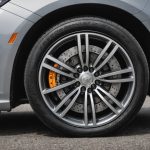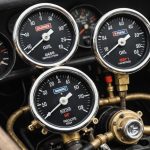Overview of British Sports Cars and Braking Systems
British sports cars have made a significant mark on the automotive world, renowned for their sleek designs and exceptional driving experiences. These cars not only offer speed but also require efficient braking systems to ensure safety and optimal performance. The historical significance of British sports cars lies in their innovation and influence on car enthusiasts worldwide, which has been evident since the mid-20th century.
An essential aspect of these vehicles is the performance upgrade of their braking systems. High-quality brakes are crucial because they provide better control, enhance stopping power, and contribute to the overall driving safety. Efficient braking systems are critical for managing speed and ensuring that the vehicles can handle the dynamic forces during intense driving conditions.
This might interest you : Ultimate guide to understanding and tuning oil pressure in british classic cars
However, common braking issues in British sports cars include brake fade, which can reduce effectiveness, and uneven brake pad wear, which affects performance. These challenges highlight the need for regular maintenance and timely performance upgrade. Investing in modern braking solutions can significantly improve both the safety and the longevity of the vehicle’s components, ensuring that the thrill of driving a British sports car is matched by reassurance in its braking capabilities.
Benefits of High-Performance Braking Systems
High-performance brakes are crucial for enhancing both stopping power and vehicle responsiveness. These brakes are designed to provide shorter stopping distances, ensuring that sports cars can halt swiftly even at high speeds. This enhanced responsiveness is particularly beneficial during sudden stops or in emergency situations, reducing the risk of collisions.
In the same genre : Comprehensive handbook for sealing your british off-road vehicle’s electrical system against water damage
Heat dissipation plays a critical role in maintaining braking efficiency. High-performance braking systems incorporate advanced materials and designs that effectively dissipate heat, preventing the adverse effects of brake fade. This quality ensures that braking performance remains consistent even under demanding driving conditions, such as frequent braking on winding roads.
In terms of durability, high-performance braking systems are engineered for increased longevity. The use of specialised materials, such as carbon-ceramic compounds, not only improves braking performance but also extends the life of braking components like rotors and pads. This increased durability means that drivers can rely on these systems for longer periods without the need for frequent replacements.
Overall, investing in a high-performance braking system enhances vehicle safety and performance, making it a valuable upgrade for British sports car enthusiasts seeking both precision and reliability.
Tools and Materials Required for Installation
Installing a high-performance braking system in British sports cars is a process that requires specific installation tools and know-how. Understanding the necessary tools and components can make the task much smoother, whether you’re approaching it as a DIY project or hiring a professional.
Essential Hand Tools
To begin with, you’ll need a standard set of hand tools such as wrenches and screwdrivers. These are fundamental for any automotive work, helping to tighten and loosen bolts and screws on the braking system components.
Specialized Equipment
For a more thorough installation, specialized equipment is paramount. This includes tools like brake bleeders to remove air pockets from the brake lines and torque wrenches to ensure bolts are tightened to the correct specifications. These tools are crucial for maintaining the integrity and performance of the new brakes.
Type of Braking Components Needed
When it comes to braking components, you must select high-quality rotors, pads, and calipers. These parts are central to the performance of the braking system, and using quality components can significantly affect the overall outcome. Investing in premium parts results in better performance and prolonged lifespan, essential for sports cars renowned for their speed and agility.
Step-by-Step Guide to Installing High-Performance Brakes
Upgrading to high-performance brakes involves a series of detailed steps to ensure a successful performance upgrade. Here’s a concise guide to aid enthusiasts and professionals alike.
Preparing the Vehicle
Begin by parking the car on a flat, stable surface and securing it with wheel chocks. Ensure the braking system is cool before starting. Lift the vehicle using a jack and support it with jack stands to access the wheels safely.
Removing Old Braking Components
Remove the wheels to access the current braking system. Loosen the caliper bolts and carefully detach the caliper. Use a C-clamp to compress the brake piston. Take out the old pads and rotors. Check brake lines for wear as they can affect future braking performance.
Installing New High-Performance Brakes
Install the new rotors, ensuring they’re seated properly. Place high-performance pads into the caliper and secure it back onto the rotor with bolts using a torque wrench. Bleeding the brake lines is crucial; this removes air that hinders responsiveness. Lower the vehicle, ensuring all components are tight. Finally, double-check your work, ensuring everything is secure for optimal brake performance.
Comparison of Different High-Performance Braking Systems
When considering performance brakes for British sports cars, it is crucial to weigh the pros and cons of various systems. Each braking system offers unique advantages based on brand and model, impacting stopping distance, fade resistance, and noise levels.
Advantages and Disadvantages
-
Stopping Distance: Some high-performance brakes reduce stopping distances more significantly, providing safety benefits in emergency situations. However, these systems might be costly.
-
Fade Resistance: Advanced materials, like carbon-ceramic, withstand heat, ensuring consistent performance. While their durability offers long-term benefits, the initial investment is high.
-
Noise Levels: Certain systems minimise noise, enhancing the driving experience. However, the materials used in quieter systems may lead to quicker wear in aggressive driving conditions.
Cost versus Performance
Evaluating budget-friendly options against performance metrics is vital. While premium systems deliver exceptional performance, more economical choices might suffice depending on usage. For example, enthusiasts investing in occasional track days might opt for top-tier systems, whereas daily drivers might choose balanced, cost-effective solutions. This careful consideration ensures that you maximise both efficiency and value tailored to individual driving needs.
Troubleshooting Common Installation Issues
Installing a braking system can sometimes lead to challenges, but identifying and correcting common issues ensures your British sports car remains safe and high-performing.
Identifying Brake Feel Issues
Post-installation, some drivers may encounter brake feel issues. This could manifest as a spongy or hard pedal, often caused by air trapped in the brake lines. To resolve this, ensure a proper bleeding process is conducted to expel air and restore pedal firmness.
Addressing Noise Problems
Unusual noises such as squealing or grinding are common post-installation issues. Noise problems often arise from improperly fitted brake pads or low-quality components. Inspect your brake pads and ensure they are securely installed to reduce unwanted sounds. Using anti-squeal compounds can also minimise noise.
Ensuring Proper Brake Balance
For optimal performance, achieving proper brake balance is crucial. Misaligned components or uneven pad wear can lead to one-sided braking. This issue requires checking caliper alignment and inspecting rotor and pad conditions. Adjustments to the braking system might be necessary to distribute braking force evenly across all wheels.
Maintenance Tips for High-Performance Braking Systems
Proper brake maintenance is essential to ensure high-performance systems operate effectively and have a long lifespan. Regular inspection routines are key; it’s advisable to schedule checks every few months to monitor for signs of wear such as thinning pads or uneven rotor surfaces. Addressing these early can prevent more costly repairs and maintain optimal performance.
The quality of brake fluid plays a pivotal role in system upkeep. Over time, brake fluid can degrade and absorb moisture, which diminishes responsiveness. Replacing the fluid according to manufacturer recommendations, typically every two years, is crucial for maintaining performance upkeep. Elevated brake temperatures can exacerbate fluid degradation, so using high-performance brake fluid is ideal for sports cars frequently subjected to high demands.
Recognising potential upgrade considerations involves being proactive rather than reactive. If you notice diminished stopping power or hear unusual noises during braking, it may be time to upgrade components, such as rotors or pads, with longer-lasting alternatives.
By following these maintenance tips, you can maximise the longevity and effectiveness of your high-performance braking system, ensuring that your driving experience remains both thrilling and secure.











